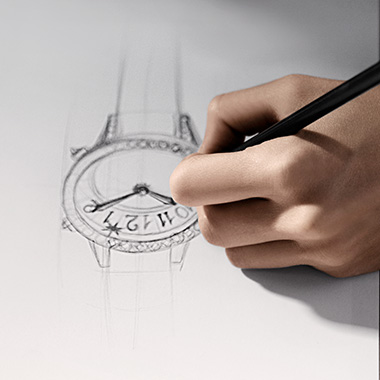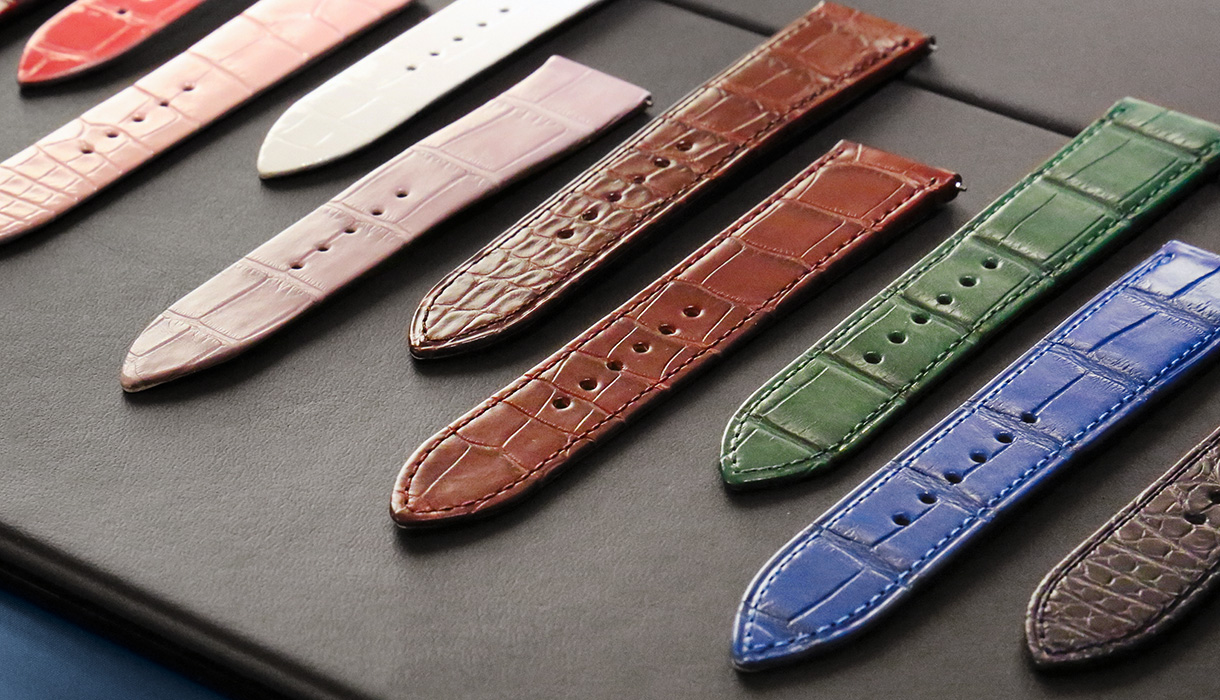This site uses cookies. By continuing to browse the site you are agreeing to our use of cookies. Find out more here
13 steps required to create a watch


Are watchmakers the only stars in this process? Watchmakers are indeed the nerve centre when it comes to watch design but they are not the only ones; in fact, far from it. Here is a look at the key steps for creating the most beautiful timepieces.
DESIGN
1. The idea
The original idea for a new watch is the only step which involves a range of different people. The idea can be based on a client’s request, a trend observed in the watch market, or even directly from the brand’s management team. In-house, two departments can also be the driving force behind a new design idea: the Marketing and Movement Departments. For example, if the Movement Department has been working on a new complication, it will also push for the development of a new model in which to showcase it.
2. Feasibility study
This is the responsibility of the Technical Department (TD) often called the Design Office (DO). Certain manufactures divide responsibilities between a Movement (TD) and a Casing (TD), although they usually work together. Feasibility studies can take anywhere from one week to six months depending on the complexity of the project. This time frame also depends on the conviction the brand has in the new project. If it appears particularly promising, this time period may be extended, and the associated investments increased in order for the new design to see the light of day.
3. Detailed study
Once the feasibility of the project has been validated by the Technical Department, the team responsible for the study takes over. This process can take from three to 24 months. Manufactures entrust them to the same TD while other brands outsource them. In-house, the move¬ments and cases are 3D-modelled using CAD (Computer-Aided Design) software. Engineers perform highly complex calculations on the train and other springs comprising the mechanism. This is a key step in modelling the future watch.


PRE-PRODUCTION
4. Industrialisation
The detailed and validated project is then analysed in terms of cost, and manufacturing and assembling processes. This is the job of the Methods Department. It is responsible for transforming the hereto theoretical studies into a fully costed industrial plan with associated deadlines. A group of designers draw up plans which are then sent to the manufacturers tasked with producing the internal and external components. The Logistics Department is responsible for managing invitations to tender, orders, creating the nomenclature, etc. The Artistic Director (or Creative Director) is responsible for approving any future finishes to the timepiece. It is the final scrutiny of the project before the famous “Manufacturing Orders” (MO) are issued.
5. Manufacturing
This is the phase when the validated components are made. The aim is to achieve the very best balance (in terms of budget and delivery times) between what can be done in-house and which tasks can be outsourced to partners.
6. Inspection
The manufactured components are individually inspected by the Department responsible for certifying compliance with the Plans defined in the industrialisation phase. Criteria related to the dimensions and aesthetics of the timepiece are checked very carefully.
PROTOTYPING
7. Assembly
Once delivered, all the components are placed in a single kit. This is where the watchmaker makes his/ her entrance and starts assembling the prototype of the new model, known as “Number Zero” or “#0”. This phase is all about fine-tuning and making adjustments. Sometimes, toing and froing between the TD and the Laboratory is necessary. Adjustments are sometimes required when the theory is put into mechanical practice for the first time.
8. Characterisation
The properties of the Number Zero are very carefully checked in order to ensure compliance with the original specifications. Next, the timepiece’s chronometric, power reserve performances, etc. are checked.
PRODUCTION
9. Launching the pilot production run
Validating the signed-off prototype, which is checked for Order for the Zero Pilot Production Run that will produce the first examples of the new model. Unlike prototypes, models from the Zero Pilot Production Run are sold.
10. Decoration, xternal parts and casing
Even in this phase, models are not considered ‘finished’ as only the movement, without any finishes or a bracelet, has been inspected. It is at the pilot production run stage, that decoration, casing and external-part experts play their role. Finishes to the watch are now added. These finishing touches explain the difference in cost between an entry-level calibre and an Haute Horlogerie timepiece. Bevelling, circular graining, sunray brushing, Côtes de Genève, etc., are all carried out with the utmost respect for watchmaking traditions.
FINAL STAGES
11. Reliability tests
The first examples from the pilot production run are tested to check their individual performance. Firstly, the movements (outside the case) are examined before being fitted into the case. These tests take at least one week for each part and ensure the timepiece’s full compliance with the initial criteria.
12. Mounting the bracelet, fitting the presentation case, and shipping
These are the last steps for making a watch. In-house, the Marketing Department will have already developed the narrative which accompanies the timepiece based on the pilot production run; the Department also drafts and translates the user manual.
13. Marketing and sales
Once the timepiece is finished, the Marketing Depart¬ment contacts the ambassadors who will present it to retailers, notably at major watchmaking events. The last link in the chain, the Sales Department working with retailers, carefully selects which timepieces will be offered to future clients.

